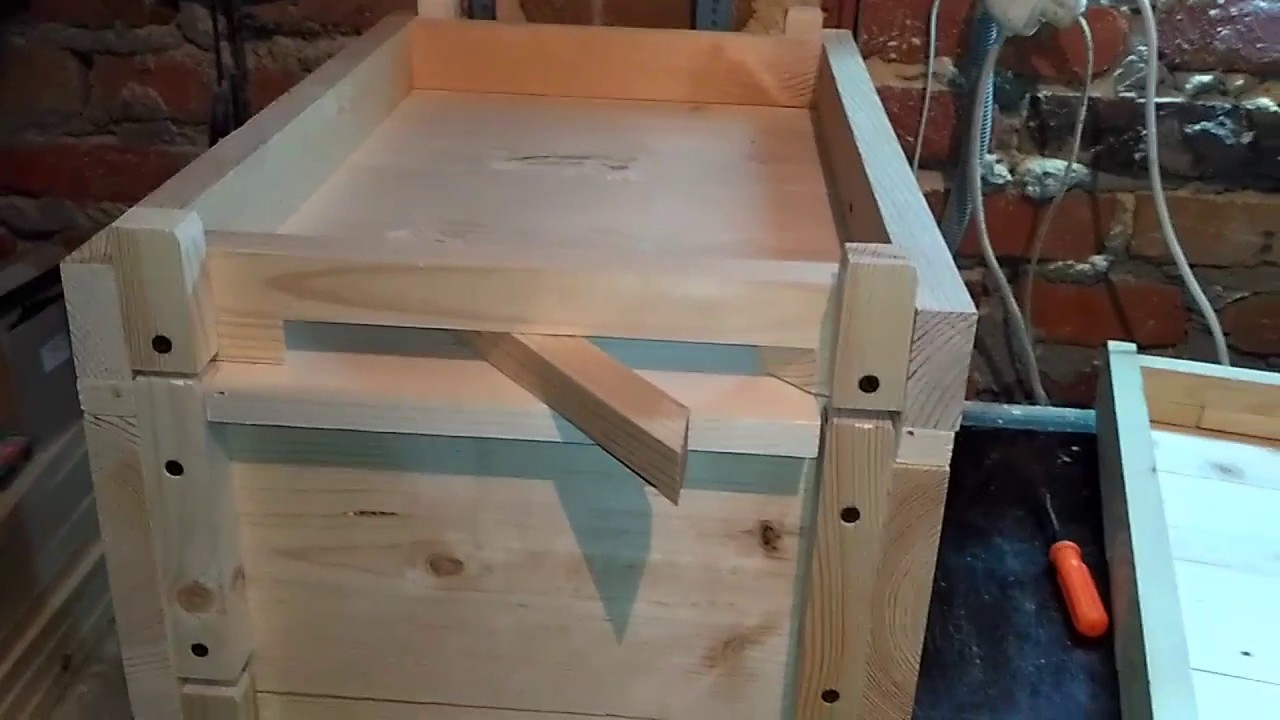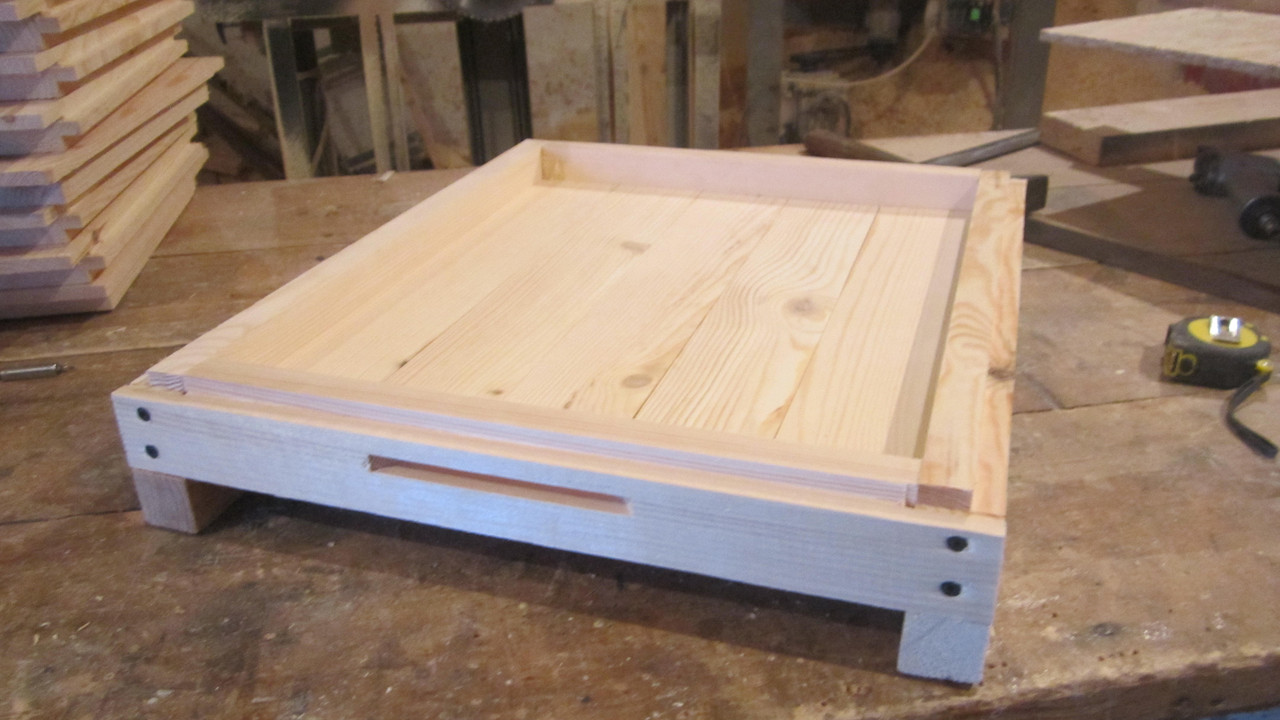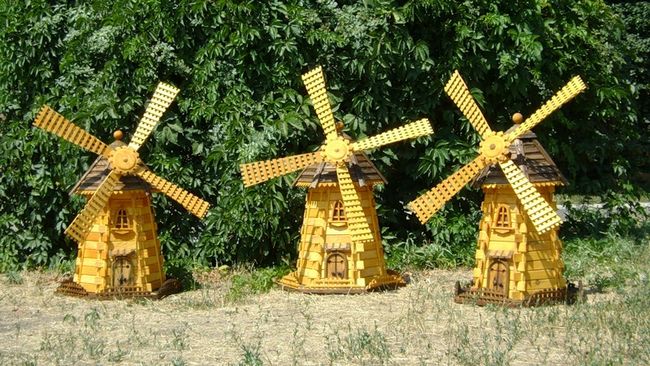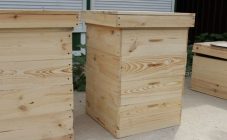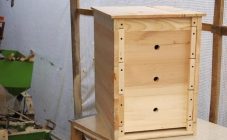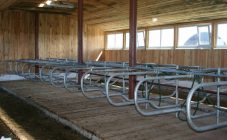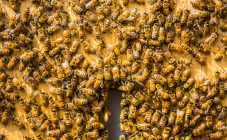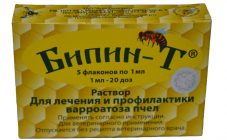Content:
Among beekeepers, such a design as a horned hive is popular. Despite the somewhat extravagant name, it is indeed very comfortable. There is nothing extravagant in the appearance of such a variety. It is called horned due to the fact that short pins stick out from its body or bottom. The author of this type of construction is Mikhail Palivoda. He conceived to create the most simple and easy-to-use model. Indeed, the result is a universal block design, which is quite quickly and easily assembled.
Horned Hive Blueprints for 10 Frames
In order to make a high-quality horned hive, drawings for 10 frames must be built according to all the rules. There is nothing particularly complicated about them. In cross-section, such a hive is a rectangle. In places where blocks (sections) of the hive are connected, bars are located. They should protrude 1.7 cm above the height of the section and be 2.2 cm higher than the lower edge. A kind of "horns" are formed - that's why the beehive bears this name. The scheme is in principle simple. The horns fix all the sections, holding them together.
The cross-section of the bars from which the structure is made is 22 × 27 mm. They are cut out 0.5 cm less than the body height indicator. This is an essential feature of such drawings.
You can make horned hives with your own hands. Such designs consist of the following elements:
- bottom (there should be not only the usual blank, but a special summer, mesh structure),
- directly cases, which accommodate 8-10 honeycomb frames. Their number depends on the planned size,
- a frame that replaces the ceiling, or a special visor - it is laid over the structure of the upper body.
Moreover, in regions with cold winters, it is recommended to insulate the frame using foam plastic. If necessary, the upper frame structure can be strengthened by covering it with sheet metal - you will get a full-fledged roof. A plastic film is stretched under the frame.
Horned hives have a number of benefits, including:
- waste-free assembly technology. Blanks for hives do not need to be processed on a planer, they are only sawn, and even small trimmings can be used to make frames,
- structural stability,
- versatility - thanks to block technology, all parts are interchangeable,
- compact size,
- ease of transportation and maintenance. This design not only takes up little space, but also weighs very little, even if it is completely filled with honey.
If the work is done correctly in such a "house" it will always be dry, which also plays an important role, since it creates a favorable microclimate for bees.
Finally, horned hives are much cheaper than conventional designs. This is especially important for commercial bee keeping.
The disadvantages of these designs can be attributed only to the not too attractive appearance in comparison with traditional options.
Keeping bees in a horned hive
Keeping bees in such hives is largely consistent with the rules for other types of dwellings. But there are also some nuances - when working with hives of this type, the beekeeper will operate not with honeycomb frames, but with sections, so initially there should be a lot of them. This is of particular importance during the period of honey collection.
Such hives are never inspected frame by frame due to design features, but hull sections can be easily inspected. This will help in time to detect the already existing swarm of queen cells located at the bottom of the frames.
There are other nuances of keeping bees in horned hives. Much attention is paid to working with the bottom. It needs to be changed regularly. In the heat, you need to use a net that will provide an influx of fresh air, so the bees do not get tired on the front wall of the hive. The mesh bottom in summer also helps to get rid of mites, which simply fall off the bees. At the same time, the risk of wax moths is reduced.
A blank bottom for the winter period allows you to maintain the optimal temperature to preserve the bee colony. In the spring, a check is required, the bottom is changed. At the same time, the beekeeper can determine the presence of brood without even checking each section. It is enough just to put your hand to the frames, and if warmth is felt, this will confirm the development of the bee colony. But, of course, you need to check at least one or two sections.
As soon as the honeycomb is whitewashed with wax, an expansion is carried out, in which a section with dry and foundation is installed. In the summer, additional sections will be installed, especially necessary during the honey collection period. Horned hives are well suited for transportation, which can be done in summer. But you need to think over in advance the scheme according to which they will be installed during transportation. For example, they can be transported in one row, if there are few of them, or maybe in two floors - then their fixation is especially important.
What are horned hives for?
Mainly, horned beehives are used in large apiaries, where the most important task is to reduce the cost of the honey production process and generate additional profit. Horned hives are an opportunity to save money on the installation of dwellings for bee families, while ensuring normal living conditions, because such a structure will perfectly protect bees from rain, snow, wind, and severe frosts.
In addition, horned hives can be a great option for beginner beekeepers as they are the simplest and cheapest kind. They are also suitable for elderly beekeepers. After all, such hives weigh little, and it is easier to handle them.
But for those who perceive beekeeping as a hobby, and make hives an element of landscape design, this is not the most interesting option.
What is the weekend method
Anyone who is interested in beekeeping, the weekend method, horned hives and other features of bee keeping, evaluate any option in terms of labor costs. The weekend method is often considered frivolous. It is suitable mainly for amateurs, and not for those who do it on an industrial basis.
What is the peculiarity of such beekeeping? As a rule, the owner does not visit the apiary often, sometimes he can visit it only once every two weeks. But he needs to learn about swarming in advance. In such a system as horned hives, as already noted, there is no frame-by-frame inspection, but you can immediately raise the body section, and this must be done.
It is also necessary to build up such a structure vertically. Moreover, the technology of assembling the horned hive allows you to do this.The Hahnemann grate plays an important role as it allows control of the queen's functions and prevents uneven sowing between the body sections. The latter is considered unacceptable, since it leads to a deterioration in the quality of honey and to the destruction of brood during pumping.
Thus, although the horned hives were not originally created for the weekend technique, they are quite consistent with the techniques used in this case.
